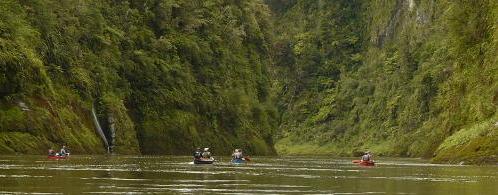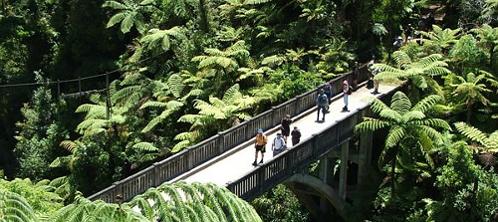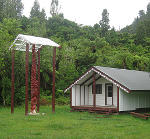whanganui river
The Whanganui River winds its way from the mountains to the Tasman Sea and is part of New Zealand's Great Walks network. Today this remote river provides a wilderness haven for unique outdoor adventure. Very few places in the world can you take a canoe on a river for several days totally cut off from the pressures of civilisation. People of all fitness levels and ages can experience the Whanganui journey.
Early Maori cultivated the sheltered terraces and built elaborate eel weirs along river channels where eels and lamprey were known to converge. Every bend of the river had kaitiaki (guardian), which controlled the mauri (life force) of that place. The mana (prestige) of a settlement depended upon the way in which food supplies and living areas were looked after for the benefit of the tribe and visitors. Te Atihaunui a Paparangi people settled the valley from 1100AD.
National Park Village is the natural destination from which to start and finish your 1, 2, 3 or 5 day Whanganui River experience. Both kayaks and open Canadian canoes can be used on the river, though most people find Canadians more convenient to carry bulky camping gear.

Mangapurua Walkway - The Bridge to Nowhere
This is a 40km track between Whakahoro and Mangapurua Landing on the banks of the Whanganui River and usually takes three days to do the walk. There are no huts. However, there are an abundance of ideal campsites on open grassy flats and small side streams to provide ample water. Arrangements with a river jet boat can be made for the return trip to Whakahoro or to transfer to the Matemateaonga Walkway.

Tieke Marae
Tieke Marae was one of many old Pa on the Whanganui River. Today Tieke has been revived as a marae. Everyone is welcome on the marae, but they must observe protocol.
Visitors to the Marae will participate in a Powhiri (Welcome). They will be met at the riverbank where the Powhiri will be explained. You will be called onto the marae and shown where to sit. The Tieke people will speak first, usually followed by a song. One of the visitors will be expected to reply in any language, which may be followed by a song. It is traditional for visitors to lay gift (koha) on the ground after speaking. It may be food, money or anything else.
The marae asks that visitors do not smoke inside the sleeping house, or drink alcohol at Tieke.